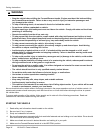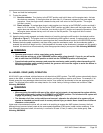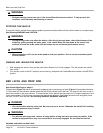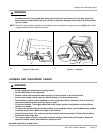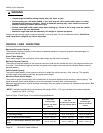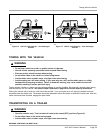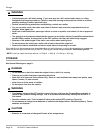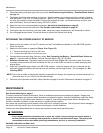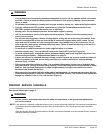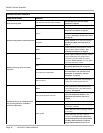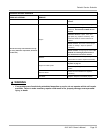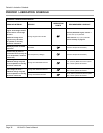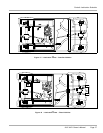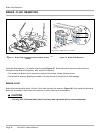
Storage
1
2
3
1. Fuel Shut-off Valve
2. Closed (OFF)
3. Open (ON)
NOTE: When selecting valve position, ensure that it is fully
opened or fully closed.
449
Figure 14 Fuel Shut-off Valve
PREPARING THE VEHICLE FOR EXTENDED STORAGE
1. Unload the vehicle so that the tires are supporting only the weight of the vehicle.
2. Store the vehicle in a cool, dry place. This will minimize battery self-discharge. If the battery appears to be weak,
have it charged by a trained technician. Use an automotive-type 12-volt battery charger rated at 10 amps or
less. Check electrolyte level after charging and add distilled water if necessary. If the battery is dead, see
Using A Booster Battery (Jump Starting) on page 52.
3. Make sure the key switch is in the OFF position and the Forward/Reverse handle is in the NEUTRAL position.
Chock the wheels.
4. Gasoline vehicles: Prepare the fuel tank.
4.1. Fill the tank with fresh fuel.
4.2. Following the manufacturer’s directions, add a commercially available fuel stabilizer (such as Sta-Bil
®
). Run
the engine in a well-ventilated area to allow treated fuel to replace untreated fuel in the carburetor.
4.3. Disconnect the fuel vent line from the fuel tank vent nipple (Figure 34).
4.4. Plug the fuel tank vent nipple so that it is air tight. Husqvarna recommends using a slip-on vinyl cap.
5. Remove both spark plugs, and pour 1/2 ounce (14.2 mL) of SAE 10 weight oil through each of the two spark plug
holes. Rotate the engine crankshaft by hand several times, then install both spark plugs.
6. Diesel vehicles: If Biodiesel fuel is used, see Biodiesel Fuel (Diesel Vehicles Only) on page 48. Prepare
the fuel tank.
6.1. Fill the fuel tank with fresh fuel.
6.2. Disconnect the fuel vent line from the fuel tank vent nipple (Figure 35).
6.3. Plug the fuel tank vent nipple so that it is air tight. Husqvarna recommends using a slip-on vinyl cap.
7. All vehicles: Change engine oil. See Engine Oil and Filter Change on page 40.
HUV 4421 Owner’s Manual Page 31




